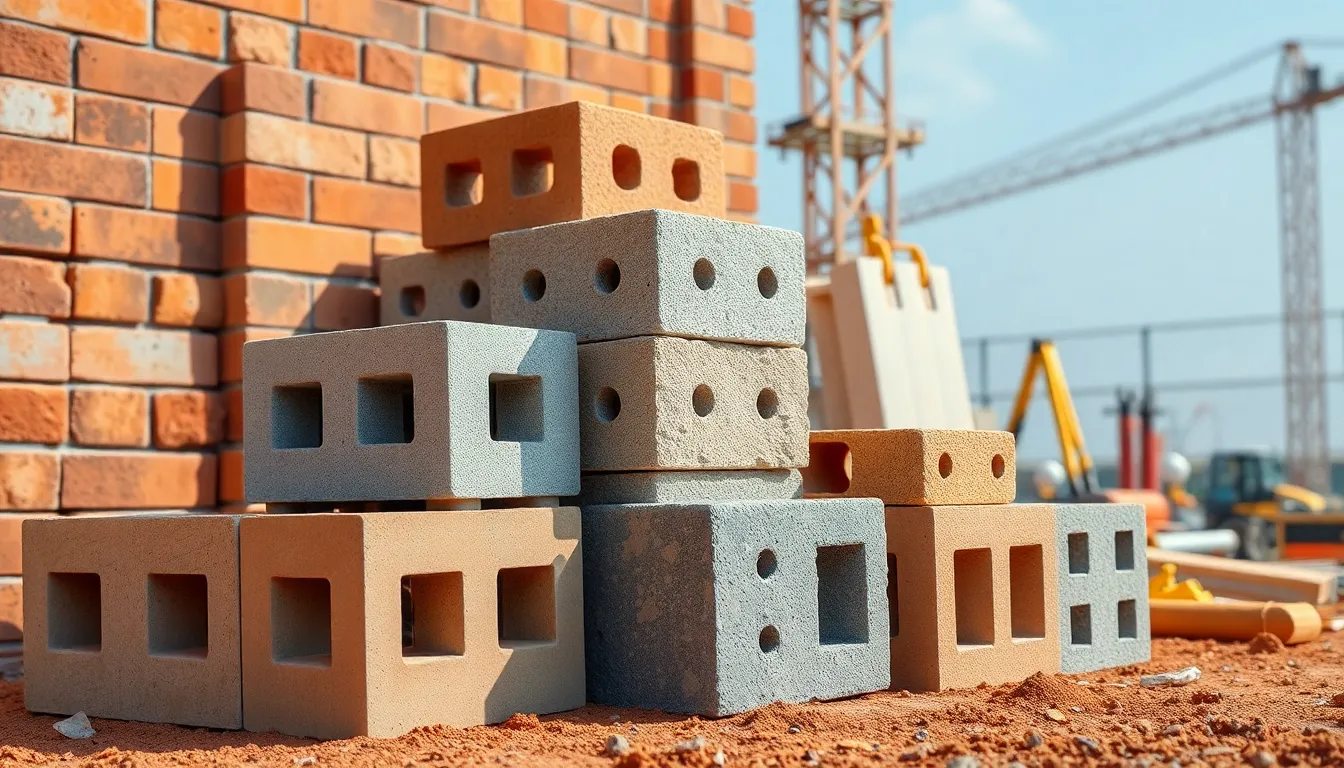Building blocks construction isn’t just child’s play; it’s the foundation of creativity and innovation. Imagine a world where the only limit to your architectural dreams is your imagination. From towering castles to futuristic cities, these colorful blocks transform ideas into reality, one piece at a time.
Table of Contents
ToggleUnderstanding Building Blocks Construction
Building blocks serve as fundamental elements in various construction processes. They enable creative exploration and practical application across multiple disciplines.
Definition of Building Blocks
Building blocks refer to modular components used to create structures, both physical and conceptual. These components come in various shapes, sizes, and materials, catering to different construction needs. Often associated with children’s toys, building blocks also play a crucial role in architecture, engineering, and design by allowing creators to visualize and realize complex projects.
Importance in Construction
Building blocks hold significant importance in construction projects, enhancing both creativity and functionality. They provide a versatile foundation for designing intricate structures, enabling users to experiment with different configurations. Their modular nature promotes efficiency, allowing for easier modifications and expansions of designs. In architectural education, building blocks serve as a vital tool, helping students grasp fundamental concepts and explore innovative solutions. Their impact on construction extends from simple models to large-scale developments, underscoring their value in realizing ambitious designs.
Types of Building Blocks

Building blocks come in various forms, each serving unique purposes in construction. Understanding these types maximizes their effectiveness in projects.
Concrete Blocks
Concrete blocks, known for durability, are widely used in construction. They consist of a mixture of cement, aggregates, and water, forming a solid structure. Commonly referred to as concrete masonry units (CMUs), these blocks are available in different sizes, typically 8 x 8 x 16 inches. Their load-bearing capacity makes them suitable for walls, foundations, and other structural applications. Moisture resistance adds to their appeal, ensuring longevity even in harsh environments. In addition, using these blocks enhances thermal mass, helping regulate indoor temperatures.
AAC Blocks (Autoclaved Aerated Concrete)
AAC blocks stand out due to their lightweight and insulating properties. Composed of a mixture of sand, lime, water, and cement, these blocks undergo a special autoclaving process that reduces density. Typically measuring 24 x 8 x 9 inches, AAC blocks provide superior energy efficiency, contributing to lower heating and cooling costs. The material’s fire resistance further enhances safety in construction. Additionally, AAC blocks facilitate faster building processes with their ease of handling and cutting, making them an attractive choice for modern architecture.
Cinder Blocks
Cinder blocks, also known as hollow blocks, are primarily made from aggregates like coal cinders and concrete. Their hollow core design reduces weight while maintaining strength, typically measuring 16 x 8 x 8 inches. These blocks are often found in projects requiring a balance of cost-effectiveness and structural integrity. Cinder blocks provide adequate insulation and can be easily reinforced with steel for added stability. Their affordability makes them a popular choice for walls, fences, and landscaping applications, demonstrating versatility in various construction scenarios.
Advantages of Building Blocks Construction
Building blocks construction offers several significant benefits that enhance various projects. These advantages are rooted in cost-effectiveness, durability, and sustainability.
Cost-Effectiveness
Building blocks reduce costs in multiple ways. First, their modular nature minimizes waste during the construction process. Second, lighter options like AAC blocks decrease transportation expenses due to lower weight. Choosing concrete blocks for load-bearing structures often means fewer materials needed for foundations. Also, cinder blocks provide an affordable alternative without compromising structural integrity. Resultantly, effective budgeting for construction projects becomes much easier.
Durability and Strength
Durability constitutes one of the main advantages of using building blocks. Concrete blocks excel in withstanding harsh weather conditions, ensuring long-term performance. AAC blocks, despite their lightweight, possess impressive load-bearing capabilities suited for diverse applications. Cinder blocks remain resilient under various loads, often proving their strength in retaining walls and outdoor structures. These characteristics lead to reduced maintenance needs, further underscoring the reliability of building blocks in construction.
Sustainability
Sustainability factors into the advantages of building blocks construction. Many of these blocks utilize eco-friendly materials and manufacturing processes, contributing to a reduced carbon footprint. Concrete blocks, when sourced locally, lower transportation impacts. AAC blocks provide excellent insulation, reducing energy consumption in buildings, while cinder blocks often include recycled materials. Prioritizing these sustainable options serves both environmental and economic interests in the construction industry.
Applications of Building Blocks Construction
Building blocks offer versatile applications across various construction domains. Their modular nature enhances efficiency and adaptability.
Residential Buildings
Residential buildings frequently utilize concrete blocks for walls and foundations. Their strength and moisture resistance ensure long-lasting structures. AAC blocks enhance thermal insulation within homes, improving energy efficiency. Many architects incorporate cinder blocks as they provide a cost-effective option without sacrificing quality. Various designs, from single-family homes to multi-unit complexes, benefit from using these blocks, demonstrating their essential role in modern residential architecture.
Commercial Structures
Commercial structures leverage building blocks for several reasons. Concrete blocks support heavy loads, making them ideal for retail spaces and warehouses. Efficient use of AAC blocks contributes to decreased energy costs, appealing to businesses prioritizing sustainability. Cinder blocks serve as an economical choice for non-load-bearing walls, optimizing construction budgets. Many commercial developments integrate these blocks into their designs, ensuring durability and functionality.
Landscaping and Retaining Walls
Landscaping projects increasingly incorporate building blocks for retaining walls. These blocks provide robust support in sloped areas, preventing soil erosion. Their aesthetic appeal complements outdoor spaces, enhancing visual interest in residential and commercial landscapes. Many builders select modular blocks for ease of installation and flexibility in design, allowing for customized features. Construction of garden beds and decorative partitions benefits from the diverse range of building blocks available, showcasing their multifunctional uses in landscaping designs.
Building blocks construction stands as a cornerstone of creativity and innovation in the architectural realm. Their modular nature not only simplifies the construction process but also opens doors to limitless design possibilities. With various types of blocks available each tailored for specific applications the efficiency and sustainability of projects are greatly enhanced.
As the industry continues to evolve embracing building blocks can lead to more cost-effective and durable solutions. Whether for residential or commercial use these components play a crucial role in shaping the structures of tomorrow. By leveraging the unique advantages of building blocks builders and architects can create spaces that are not only functional but also environmentally friendly.






